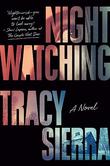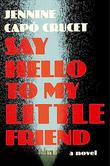
by Raina Telgemeier ; illustrated by Raina Telgemeier ‧ RELEASE DATE: Sept. 17, 2019
With young readers diagnosed with anxiety in ever increasing numbers, this book offers a necessary mirror to many.
Young Raina is 9 when she throws up for the first time that she remembers, due to a stomach bug. Even a year later, when she is in fifth grade, she fears getting sick.
Raina begins having regular stomachaches that keep her home from school. She worries about sharing food with her friends and eating certain kinds of foods, afraid of getting sick or food poisoning. Raina’s mother enrolls her in therapy. At first Raina isn’t sure about seeing a therapist, but over time she develops healthy coping mechanisms to deal with her stress and anxiety. Her therapist helps her learn to ground herself and relax, and in turn she teaches her classmates for a school project. Amping up the green, wavy lines to evoke Raina’s nausea, Telgemeier brilliantly produces extremely accurate visual representations of stress and anxiety. Thought bubbles surround Raina in some panels, crowding her with anxious “what if”s, while in others her negative self-talk appears to be literally crushing her. Even as she copes with anxiety disorder and what is eventually diagnosed as mild irritable bowel syndrome, she experiences the typical stresses of school life, going from cheer to panic in the blink of an eye. Raina is white, and her classmates are diverse; one best friend is Korean American.
With young readers diagnosed with anxiety in ever increasing numbers, this book offers a necessary mirror to many. (Graphic memoir. 8-12)Pub Date: Sept. 17, 2019
ISBN: 978-0-545-85251-7
Page Count: 224
Publisher: Graphix/Scholastic
Review Posted Online: May 11, 2019
Kirkus Reviews Issue: June 1, 2019
Share your opinion of this book
More by Raina Telgemeier
BOOK REVIEW
by Raina Telgemeier ; illustrated by Raina Telgemeier
BOOK REVIEW
by Raina Telgemeier ; illustrated by Raina Telgemeier
BOOK REVIEW
by Raina Telgemeier ; illustrated by Raina Telgemeier
More About This Book
PROFILES

by Jordan Sonnenblick ; illustrated by Jordan Sonnenblick ‧ RELEASE DATE: Feb. 2, 2021
Though a bit loose around the edges, a charmer nevertheless.
Tales of a fourth grade ne’er-do-well.
It seems that young Jordan is stuck in a never-ending string of bad luck. Sure, no one’s perfect (except maybe goody-two-shoes William Feranek), but Jordan can’t seem to keep his attention focused on the task at hand. Try as he may, things always go a bit sideways, much to his educators’ chagrin. But Jordan promises himself that fourth grade will be different. As the year unfolds, it does prove to be different, but in a way Jordan couldn’t possibly have predicted. This humorous memoir perfectly captures the square-peg-in-a-round-hole feeling many kids feel and effectively heightens that feeling with comic situations and a splendid villain. Jordan’s teacher, Mrs. Fisher, makes an excellent foil, and the book’s 1970s setting allows for her cruelty to go beyond anything most contemporary readers could expect. Unfortunately, the story begins to run out of steam once Mrs. Fisher exits. Recollections spiral, losing their focus and leading to a more “then this happened” and less cause-and-effect structure. The anecdotes are all amusing and Jordan is an endearing protagonist, but the book comes dangerously close to wearing out its welcome with sheer repetitiveness. Thankfully, it ends on a high note, one pleasant and hopeful enough that readers will overlook some of the shabbier qualities. Jordan is White and Jewish while there is some diversity among his classmates; Mrs. Fisher is White.
Though a bit loose around the edges, a charmer nevertheless. (Memoir. 8-12)Pub Date: Feb. 2, 2021
ISBN: 978-1-338-64723-5
Page Count: 208
Publisher: Scholastic
Review Posted Online: Nov. 17, 2020
Kirkus Reviews Issue: Dec. 1, 2020
Share your opinion of this book
More by Jordan Sonnenblick
BOOK REVIEW
BOOK REVIEW
BOOK REVIEW

by Kelli Dunham ; illustrated by Laura Tallardy ‧ RELEASE DATE: Nov. 14, 2017
This introduction to puberty may be particularly helpful for girls looking ahead to that stage.
A growing-up guide for preteen girls.
This puberty-navigation guide covers girls’ bodily changes, body care, health, relationships with family and friends, staying safe, and handling stress. In many cases the author, a registered nurse, has covered the same material as she did in various editions of this title as well as The Boy’s Body Book. This girls’ book skips the topics of sleep and performance-enhancement drugs in favor of a section on eating disorders. As in the boys’ book, controversial subjects are addressed generally and conservatively if at all. She includes a rough diagram of female reproductive organs and tells her young readers about menstruation and visiting a gynecologist but not how babies are made. She talks about having boys as friends, saying “Don’t put pressure on yourself to call any of your close friendships ‘dating.’ ” The strength of this title is its emphasis on good grooming, healthy living habits, and positive relationships. Added for this fourth edition is new material on interacting with adults, personal empowerment, body language, reputations, and “learning disabilities,” helpful information for the growing segment of the preteen population identified with cognitive and social learning differences. Tallardy’s cartoon illustrations show girls and adults of varying ethnicities and provide a cheerful accompaniment.
This introduction to puberty may be particularly helpful for girls looking ahead to that stage. (resources, index) (Nonfiction. 8-12)Pub Date: Nov. 14, 2017
ISBN: 978-1-60433-714-3
Page Count: 148
Publisher: Cider Mill Press
Review Posted Online: Sept. 17, 2017
Kirkus Reviews Issue: Oct. 1, 2017
Share your opinion of this book
More by Kelli Dunham
BOOK REVIEW
by Kelli Dunham ; illustrated by Steve Bjorkman
© Copyright 2024 Kirkus Media LLC. All Rights Reserved.
Hey there, book lover.
We’re glad you found a book that interests you!
We can’t wait for you to join Kirkus!
It’s free and takes less than 10 seconds!
Already have an account? Log in.
OR
Trouble signing in? Retrieve credentials.
Welcome Back!
OR
Trouble signing in? Retrieve credentials.
Don’t fret. We’ll find you.





